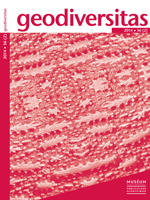A new Rhinopomatidae (Chiroptera) from the Miocene Paleokarst of Baixas (E-Pyrénées Dept., France); zoogeographical considerations.
Remains of various fossil mammals were found within a large quarry close to Baixas village (E-Pyrénées Dept., France). Among them are tooth remains of a bat poorly known as a fossil: a rhinopomatid one.The presumed age of the associated fauna, especially obtained from the rodents, is recognized to be the MN 4 biozone (Early Miocene, about 16 My). The Rhinopoma Geoffroy Saint-Hilaire, 1818 genus is mostly known from the recent fauna, with rare species (two more common ones), extending across warm to arid areas of the Western Old World. Rare fossil rhinopomatids are reported, from Fayum (Egypt), Israël, and north-mediterranean egean Greece. The Baixas ones are 65 specimens. They display the typical tooth morphology of these bats, nevertheless preserving some structures which vanished from recent ones, or less evolved (as regards lower and upper canines, or P4). The originality of this rhinopomatid species supports its recognition as a new genus and species, Corbarhina handae n. gen., n. sp. Recent molecular considerations supported the rhinopomatids origin from rhinolophoid ancestry. The position here promoted from tooth morphology retains the rhinopomatid origin from emballonurid ancestors.





